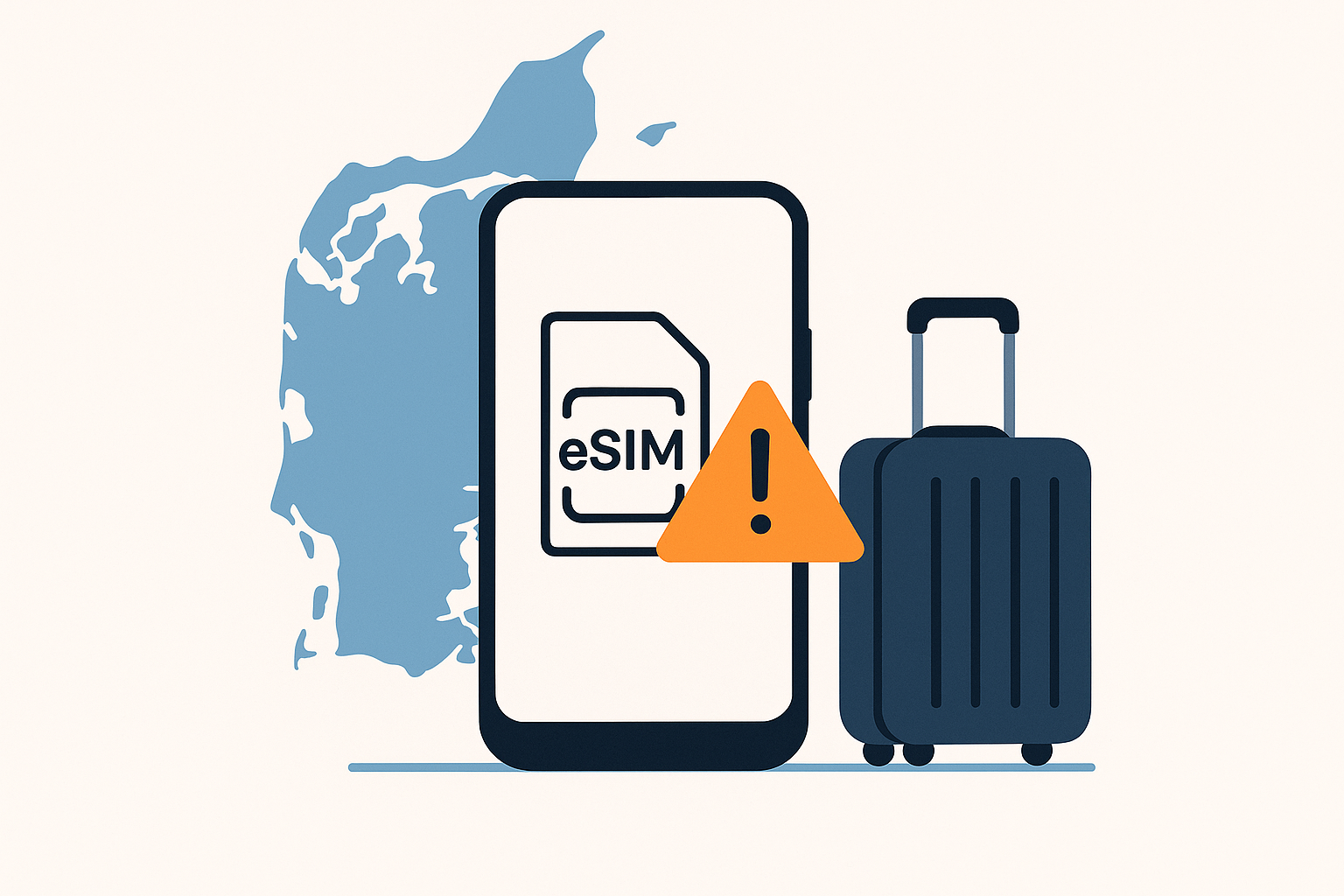Recently, I went on a trip to Denmark. We stayed in a rental home, but the Wi‑Fi was far from ideal, and 5G looked like the better option, so getting an eSIM was the first solution I thought of. As a result, I bought an unlimited eSIM for 5 days, but ended up still using Wi‑Fi when on location.
What is an eSIM?
An eSIM is what it sounds like: an electronic version of the SIM card you’re used to. Many providers nowadays offer the option for an eSIM when you get a data plan as a subscription. They are common in many countries; for example, in the USA, Apple only sells their latest iPhones with eSIM support and no physical SIM tray.
Why get an eSIM for your trip?
Getting an eSIM for your trip is the simplest and fairest way to get data on your phone in another country. It lets you compare eSIM providers online to find the best deal with the best terms.
In comparison, with physical SIM cards you have to buy at a local shop, you still have to hope you get what you were promised without paying a “tourist price.”
My expectations when buying an eSIM
Before I get to why buying an eSIM can lead to very slow and unresponsive internet on your trip, here were my expectations.
I expected an internet experience like any other Danish local with a data plan in Denmark. Of course, signal strength and 4G/5G capabilities can vary greatly depending on location and the equipment used in cell towers, but a half‑decent experience should be possible. I’m also used to unlimited data, so an unlimited plan was my goal for the 5 days of my trip.
Comparing eSIM offerings and buying one
With this expectation in mind, I compared offerings online and bought the plan that seemed to fit me and my budget best.
I didn’t want to spend a lot of time comparing. I found the website eSIMDB insightful and straightforward for comparing eSIM offerings in Denmark with solid filtering. I filtered for a 5‑day plan, 50 GB+, with tethering allowed.
I bought a plan at Roamify
Based on my comparison, an unlimited 5‑day plan from Roamify for Denmark only looked like the best and cheapest option. I would get unlimited data without daily caps or other sneaky terms, and tethering was allowed (also without any limits). Great!
Installation was very simple using a one‑click install link on my iPhone. In my iPhone settings, I set the eSIM as the SIM to use for data and went off.
Result: slow internet with high latency
And oh man, I got to experience the internet like in the 90s. It was slow and painfully unresponsive. The quality of a YouTube video was OK, but getting to the video itself took ages due to very high latency.
Why slow? Routing and APN together
The underlying issue is how your traffic is routed and where it “breaks out” to the public internet. That breakout point is controlled by the APN (Access Point Name) your eSIM uses.
For my Roamify plan, I could use two APNs:
- mobile.three.com.hk (Hong Kong)
- esimnext (Singapore)
An APN tells the mobile network which core gateway to use. That gateway sets your public IP, your content region (like ads and language), and a big part of your latency. With the Hong Kong APN, I even had issues accessing applications like ChatGPT.
My public IP looked like I was in Hong Kong, and Google Ads showed in Traditional Chinese. All signs that validated my understanding that the traffic was exiting in Hong Kong and then coming back to me in Denmark.
You might think the websites you visit are served directly by the Danish provider you connect to, but it’s more like using a VPN at home. Here’s how the path flows.
Normal Europe‑based route (when using my eSIM from home)
- I request Google.nl.
- 3 DK receives my request and forwards it to Odido NL.
- Odido NL gets Google.nl.
- Google.nl serves the website to Odido NL.
- Odido NL forwards the data to 3 DK.
- 3 DK sends the data back to me over 4G/5G.
The traffic is now staying within Europe, so latency remains relatively low.
Hong Kong APN route (what I experienced)
- I request Google.nl.
- 3 DK receives my request and forwards it to Hutchison HK (per the Hong Kong APN).
- Hutchison HK gets Google.nl.
- Google.nl serves the website to Hutchison HK.
- Hutchison HK forwards the data to 3 DK.
- 3 DK sends the data back to me over 4G/5G.
Physically, Denmark and Hong Kong are about 6500 km apart. Based on the speed of light in fiber, that alone adds about 86.8 ms of round‑trip latency per request, without counting the latency of the 4G/5G connection itself or processing delays anywhere along the chain.
When I ran a test with Speedtest.net I ended up with latency of at least 450ms. This shot up to 2500ms during the download test. That latency alone will make your browsing experience feel slow.
Switching APNs can change which country your traffic exits from (for me, Hong Kong vs Singapore), but if none of the available APNs break out in Europe, you’ll still see long routes and high latency.
My advice
- Be very aware of the APN being used/offered when you get an eSIM plan. If the breakout is far away, expect high latency and a poor experience.
- See if a local provider offers short‑term tourist plans (for a few days). It might be a bit more expensive, but the experience will be much better or simply usable.


